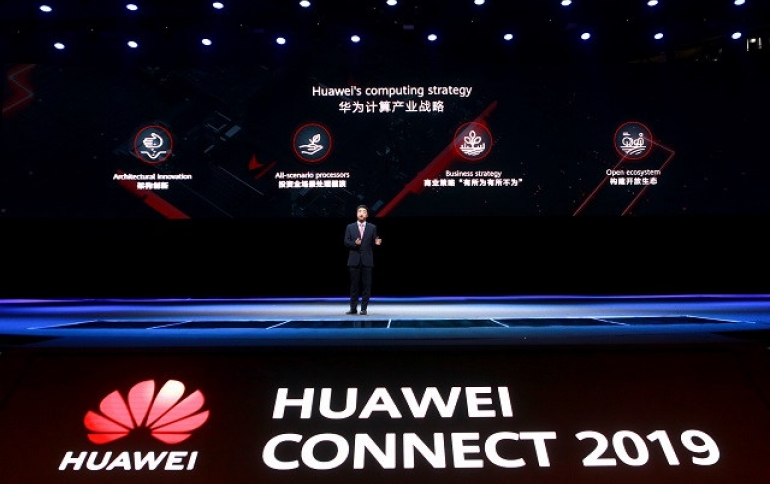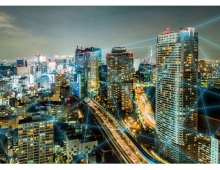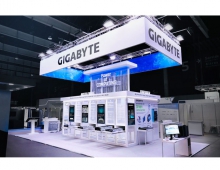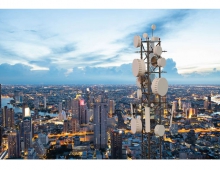
Huawei Releases the Atlas 900 AI Training Cluster, Woos Tech World With $1.5 Billion and 5G Secrets
Huawei Technologies Co. is offering up its 5G secrets and $1.5 billion to software developers, while also announced its strategy for the computing market and released Atlas 900 AI training cluster.
5G push
Speaking on Wednesday at the HUAWEI CONNECT 2019 event in Shanghai, China, Huawei’s deputy chairman Ken Hu said that it has secured more than 50 5G commercial contracts even as it fights accusations from the United States and its allies that its networks are vehicles for Chinese espionage.
“We will have a clearer picture by mid-next year because by then the first batch of 5G commercial roll-outs in China will reach a certain phase,” he told reporters, estimating that Huawei had now signed about 60 contracts.
China’s big three state telcos are racing to roll out 5G services in more than 50 cities this year, following countries like South Korea and the United States which have already started the service that promises to support new technologies such as autonomous driving.
Huawei’s home market has become more crucial to the company since Washington in May banned U.S. firms trading with it due to national security concerns, hitting the company’s international business. The company denies the allegations and says Washington is trying to curb its industry leadership to benefit U.S. companies.
Huawei founder and CEO Ren Zhengfei last week told The Economist magazine that in order to resolve U.S. concerns, he is open to selling his firm’s 5G technology - including patents, code, blueprints, production know-how - to Western firms for a one-off fee.
“If the proposal gets implemented it will on one hand support more competition in 5G across the global supply chain, and such competition is beneficial to consumers and users and also contributes to the industry itself,” he said.
Atlas 900
The company also on Wednesday launched what it described as “the world’s fastest artificial intelligence training cluster”, dubbed Atlas 900.
"The future of computing is a massive market worth more than two trillion US dollars," said Ken Hu. "We'll keep investing with a strategy that focuses on four key areas. We will push the boundaries of architecture, invest in processors for all scenarios, keep clear business boundaries, and build an open ecosystem."
The industry's approach to computing is evolving from rule-based to statistical models, which are the foundation of machine learning. Huawei estimates that in the next five years, statistical computing will become the mainstream and AI computing will account for more than 80% of all computing power used around the world.
To carve out a place in this market, Huawei's strategy will focus on four key areas:
- Architecture innovation. Last year Huawei launched the Da Vinci architecture, a processor architecture designed to provide a steady and abundant supply of affordable computing power. Huawei will continue to invest in basic research.
- Investment in all-scenario processors. Huawei has a full lineup of processors: Kunpeng processors for general purpose computing, Ascend processors for AI, Kirin processors for smart devices, and Honghu processors for smart screens.
- Clear business boundaries. Huawei won't sell its processors directly. Instead, it will provide them to its customers in the form of cloud services, and to its partners in the form of components, prioritizing support for integrated solutions.
- Building an open ecosystem. In the next five years, Huawei will invest another US$1.5 billion in its developer program. The aim is to expand the program to support five million developers and enable Huawei's worldwide partners to develop the next generation of intelligent applications and solutions.
Atlas 900 combines the power of thousands of Ascend processors. It takes Atlas 900 only 59.8 seconds to train ResNet-50, the gold standard for measuring AI training performance. This is 10 seconds faster than the previous world record.
Huawei also deployed Atlas 900 on Huawei Cloud as a cluster service, making extraordinary computing power more broadly accessible to its customers across different industries. Huawei has offered these services at a great discount to universities and scientific research institutes worldwide.
Software development program
Huawei will invest another US$1.5 billion in its developer program. That effort is gaining urgency with Huawei in danger of losing access to American circuity and code, including the Google software it needs to run the world’s No. 2 mobile device business.
Huawei is developing alternatives to U.S. technology to help safeguard the world’s largest networking business. Part of that involves ensuring a thriving community of partners. The company established a developer program to encourage external parties to create apps for Huawei services, including its just-unveiled in-house smartphone platform, HarmonyOS.
Huawei intends to build its base of partner-developers to 5 million eventually. That army of firms and individuals could help craft apps optimized to run on Huawei’s Kunpeng and AI chip computing architecture, which will power everything from internet servers to machine learning solutions.
“This work has already started and we’ve received very good feedback,” he told an audience of technology executives in Shanghai. “We have implemented this strategy and we’re looking forward to more partners joining us.”
Huawei is scheduled to launch a new high-end smartphone on Thursday, despite uncertainty about whether the new handset will be able to run Google’s Android operating system and apps.
Digital inclusion – Leaving no one behind
During HUAWEI CONNECT 2019, Huawei's Deputy Chairman Ken Hu gave a speech at the TECH4ALL Summit. The theme of the summit was "How Inclusive Innovation Can Empower the World". In his speech, Hu elaborated on Huawei's TECH4ALL initiative and shared the initiative's current progress. He also called on more individuals and organizations to join Huawei in addressing global issues related to healthcare, education, development, and the environment. The target of TECH4ALL is to help another 500 million people benefit from digital technology in the next five years.
Huawei pressed ahead with its long-term initiative, TECH4ALL, to promote digital inclusion. Digital inclusion means every individual and organization can equally access and use information and communications technology.
"Technology shouldn't sit in an ivory tower. Instead, it should benefit all humanity. We firmly believe that digital technology will benefit every person, home, and organization." said Hu.
"Digital technology is reshaping the world. We want it to benefit everyone and we want digital inclusion for all. In this regard, technology is the foundation, applications are the key, and skills provide assurance." Hu said. "TECH4ALL will focus on three areas: technology, applications, and skills."
- Technology: Huawei will continuously reduce connection costs and remove coverage barriers through technological innovation in connectivity, AI, cloud, and mobile devices.
- Applications: Huawei will empower ecosystems and help developers create more applications for different communities and industries.
- Skills: Huawei will work with local governments, communities, and other sectors to enhance the digital skills of all of society.
As of today, Huawei has ensured communications for more than three billion people around the world, and supported the stable operations of more than 1,500 networks in more than 170 countries and regions. Hu said that in the next five years, the company will help another 500 million people benefit from digital technology. These benefits will not be limited to connectivity, also including the benefits of technologies like AI, cloud, and smart devices as well as related applications and skills.
New +AI Products
Huawei unveiled its next-generation intelligent product strategy and new +AI products for the enterprise market. The new products and solutions include a three-layer AI architecture based on the Engine AI Turbo product series, the iMaster NCE autonomous driving network management and control system, and the first iMaster NAIE network artificial intelligence (AI) platform; a new-generation OceanStor Dorado intelligent all-flash storage based on Kunpeng and Ascend processors; Huawei OptiXtrans DC908, an intelligent data center interconnect (DCI) product; and more.
Sun Fuyou, Vice President and CTO of Huawei Enterprise Business Group, said: "Huawei Enterprise’s next-generation product strategy is nicknamed ‘123456’, which means we aim to build 1 intelligently connected world; focus on 2 service scenarios – campuses and data centers; provide 3 Intelligent OptiX Network product series; offer 4 intelligent IP network engines series products; and leverage 5G, Wi-Fi 6 and Huawei’s OceanStor Dorado V6 as well as other products and solutions developed by Huawei.
“In addition to deep-diving into singular product areas, Huawei Enterprise is also integrating key technologies across multiple product areas, for example, IP and optical networks, 5G and Wi-Fi 6, IP and storage, and soft/hard SDN. Focusing on campuses and data centers, we are advancing intelligence in our innovations to offer competitive next-generation intelligent products and solutions.”
Huawei introduced a three-layer AI architecture to create intelligent IP networks, bringing together intelligent connectivity, intelligent operations and maintenance, and intelligent learning for the AI era. The architecture includes the Engine AI Turbo product series, the iMaster NCE autonomous driving network management and control system, and the first iMaster NAIE network AI platform. The company has incorporated AI capabilities into various layers of IP networks, enhancing the intelligence level of IP networks and accelerating network development to support autonomous driving.
Huawei’s new-generation OceanStor Dorado intelligent all-flash storage (OceanStor C series) is an end-to-end high-speed platform built based on the Kunpeng 920 and Ascend 310 AI processors. It enables 20 million I/O operations per second (IOPS) and reduces latency to within 0.1 ms. The fully interconnected SmartMatrix architecture ensures the smooth operation of core businesses even in the case of controller failure. In addition, based on the machine learning capabilities of the Ascend 310 AI processor, the read cache hit rate is improved by 50%. Leveraging cloud-based AI interconnectivity, it also allows full-lifecycle intelligent management, making the storage experience continuously better during usage.
Peter Zhou, Vice President of Huawei's IT Product Line and President of Huawei’s Intelligent Data and Storage Domain, announced the launch of Flash Only Plus, a universal flash storage scheme, which makes all-flash storage more affordable, more accessible and easier to use.
Huawei also announced the Intelligent OptiX Network strategy for enterprises and unveiled three series of innovative products – OptiXtrans, OptiXaccess, and OptiXstar – to cope with the all-optical data center, all-optical transmission, and all-optical campus scenarios. The newly launched products include:
- Huawei OptiXtrans DC908, the first intelligent DCI product, is tailored for global data center customers to ensure smooth data center interconnection. This product is based on a simplified architecture and supports one-click service provisioning without professional operations. Deployment takes less than eight minutes. With a 48T transmission capacity over one optical fiber, it can reduce the number of fiber connections by 90% a site. Equipped with dedicated chips and algorithms, networks can be managed intelligently.
- Huawei OptiXtrans E9600, the first intelligent all-optical transmission device customized for enterprises, can be widely used in industries that are significant to a nation’s social and economic development, such as energy, power and electricity, transportation, education and finance.
- Huawei OptiXaccess and OptiXstar are optical access and optical terminal product series designed for enterprises that aim to reshape traditional campus networks with environmentally friendly optical fibers and increase enterprise operational efficiency.
EI Cluster Service and Industrial Intelligent Twins by Huaewi Cloud
Zheng Yelai, the president of Huawei Cloud Business Unit, delivered a speech titled "Crossing the Commercial Chasm – Building Inclusive AI". He proposed four keys to implementing AI and announced the official launch of the cutting-edge EI Cluster Service and Industrial Intelligent Twins.
Last year, Huawei proposed 3 major AI scenarios: repetitive, high-volume work; expert experience; and multi-domain collaboration. So far, HUAWEI CLOUD Enterprise Intelligence has been applied to more than 500 projects in 10 industries, including urban management, manufacturing, healthcare, automobile, campus, and Internet.
Mr. Zheng also commented that "to successfully implement AI, we must coordinate four key roles: clear business scenarios, ISVs/SIs, devices/processes, and AI platforms."
- Clear business scenarios refers to well-defined boundaries and objectives, closed-loop scenarios, and sufficient data. For example, Sanlian Hope, a Chinese synthetic fiber technology provider, visually inspects filaments. Workers were only able to inspect the last 100 meters of each spool, raising possible quality assurance issues. Since 2018, Sanlian Hope has worked with HUAWEI CLOUD to use AI to improve synthetic fiber quality inspection. Now they can inspect the quality of each spool
- Readily available computing power. Currently, computing power is insufficient, expensive, and difficult to obtain. HUAWEI CLOUD says it provides the world's fastest EI Cluster Service, powered by Atlas 900, to provide developers with sufficient and cost-efficient computing power. This EI cluster consists of thousands of Ascend 910 processors and can complete the ResNet-50 training on ImageNet within only 59.8 seconds, 15% faster than its runner-up.
- Continuously evolving AI services. In the AI era, building an online, closed-loop system is critical.
- Well-matched organization and talent. The talent, organization, and process must be well-matched to better serve humans. Shenzhen Airport worked with HUAWEI CLOUD to build an intelligent aircraft stand allocation system. The system frees operators from repetitive tasks by learning rules and analyzing valuable past experiences. Shuttle bus use was reduced as the flight docking ratio increased, improving passenger travel experience.
HUAWEI CLOUD Industrial Intelligent Twins
HUAWEI CLOUD officially released the Industrial Intelligence Twins for the manufacturing industry. As a new engine for intelligent industry transformation, it applies various technologies, such as knowledge graph–powered intelligent recognition engine, AI model–based intelligent prediction engine, and decision-making optimization engine.
The HUAWEI CLOUD Industrial Intelligent Twins has been applied to multiple fields, such as energy, mining, electric power, cement, and chemical fiber. For example, HUAWEI CLOUD cooperated with China National Petroleum Corporation (CNPC) to use the intelligent recognition engine to help identify hydrocarbon reservoirs, accelerating identification by 70%. HUAWEI CLOUD worked with the Golden Stone Group to use the intelligent optimization engine to improve the coal blending and coke quality prediction accuracy to over 95%.





















